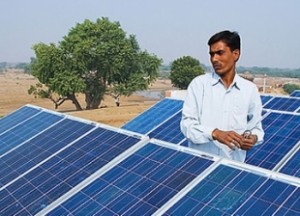Application And Education of Solar Power Could Go Hand-in-Hand
June 7, 2018
India's 2022 RE target Could Conserve 25% of Water
June 12, 2018India’s Renewable energy Capacity Enhancement
Starting out with a target of just 20 GW by 2022, the country has now confidently made another massive target enhancement to install 227 GW of renewable energy capacity by 2022. This shows how far India has come in adopting the cleaner and greener sources of power. The country is using solar power in all walks of life ranging from solar on rooftops, big parks, street lights, microgrids, to small commercial products and transportation in India.
India has raised its renewable energy installation target from 175 GW to 227 GW by 2022. India has already attained an installed renewable energy capacity of 70 GW. The country currently ranks fifth in terms of renewable energy capacity with an installed capacity of 70 GW. The country has another 40 GW under tendering and construction phase. The target enhancement is a big blow to criticisms about India being able to achieve its 175 GW by 2022. With this addition, the country will rank amongst the top three nations (after USA and China), having made considerable investments in the sector.
The ministry believes that the country will overachieve its target owing to new schemes like floating solar, manufacturing-linked solar and offshore wind projects. Other than these, the government is also planning to promote solar application aggressively in rural parts of India with schemes like KUSUM scheme (Kisan Urja Suraksha evam Utthaan Mahaabhiyan) and SRISTI scheme.

